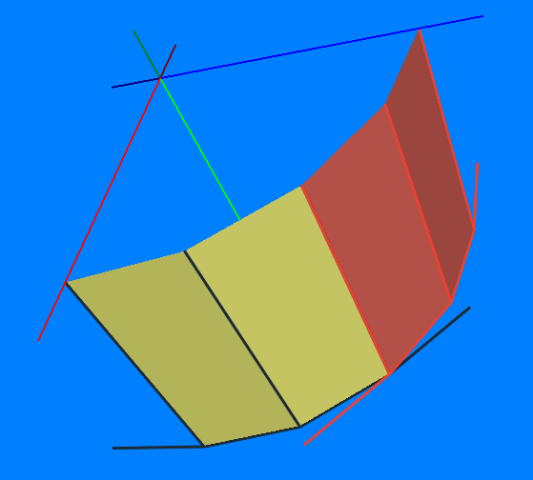
+- LDraw.org Discussion Forums (https://forums.ldraw.org)
+-- Forum: Administrative (https://forums.ldraw.org/forum-4.html)
+--- Forum: Standards Board (https://forums.ldraw.org/forum-5.html)
+--- Thread: Complementary conds (/thread-27005.html)
Complementary conds - Willy Tschager - 2023-01-10
Guys,
please read Travis' proposal:
https://forums.ldraw.org/thread-26711-post-48604.html#pid48604
have a look at:
https://forums.ldraw.org/thread-26711-post-48665.html#pid48665
and:
https://forums.ldraw.org/thread-24262-post-39346.html#pid39346
and ratify.
And since you're there please say if you're okay with Gerald's pictures:
https://forums.ldraw.org/thread-26711-post-48633.html#pid48633
w.
RE: Complementary conds - Travis Cobbs - 2023-01-15
Proposal:
Update the overlaps section of the official parts document as follows. Replace the second paragraph with the following:
Quote:All or part of a conditional line (line type 5) may not overlap all or part of any other conditional line (line type 5), with the exception of complementary conditional lines for curved primitives. Complementary conditional lines are placed at the end of curved primitives where those curved primitives may join with either a continuation of the curve, or with other geometry. In this case, the control points that are off of the edge of the curved primitive are placed so they are tangent to the curve.
If two such curves are placed next to each other (for example to turn a quarter cylinder into a half cylinder), the conditional lines on the edge of each primitive will overlap exactly, and their control points will complement each other such that at most one will be rendered at any given time, and that one of the two will always be rendered when appropriate. When other geometry is placed against such a curved primitive, nothing needs to be done if the geometry is tangent to the curve. If it is sloped further, then a complementary conditional line will be placed on the edge of that geometry, with the control points past the edge of the geometry configured to be tangent to the curve, and the two end points of the conditional placed to exactly overlap the complementary conditional line on the edge of the curved primitive.
Example:
The first and last conditional lines in a cyli primitive have a control point that is tangent to the cylinder. When two such cyli primitives join, the two conditional lines complement each other, like so:

RE: Complementary conds - Philippe Hurbain - 2023-01-15
(2023-01-15, 2:24)Travis Cobbs Wrote: Proposal:
Update the overlaps section of the official parts document as follows. Replace the second paragraph with the following:
Shouldn't it be spelled "complementary" instead of "complimentary"? (otherwise looks good!)
RE: Complementary conds - Travis Cobbs - 2023-01-16
(2023-01-15, 8:04)Philippe Hurbain Wrote: Shouldn't it be spelled "complementary" instead of "complimentary"? (otherwise looks good!)
Thank you, yes. I will edit my post.
RE: Complementary conds - Roland Melkert - 2023-01-17
(2023-01-10, 9:25)Willy Tschager Wrote: Guys,
please read Travis' proposal:
Sorry for joining in late, for some reason I thought this was a library admin thing.
The proposed text alone didn't sink in with me, but judging on the images it seems a decent thing to do.
Only alternative would be to have 'fade over' primitives or primitives without the last and/or first conlines as far I understand it.
But then again I'm not a part designer, so I'm ok with whatever the authors prefer.
RE: Complementary conds - Travis Cobbs - 2023-01-18
(2023-01-17, 21:15)Roland Melkert Wrote: Sorry for joining in late, for some reason I thought this was a library admin thing.
The proposed text alone didn't sink in with me, but judging on the images it seems a decent thing to do.
Only alternative would be to have 'fade over' primitives or primitives without the last and/or first conlines as far I understand it.
But then again I'm not a part designer, so I'm ok with whatever the authors prefer.
Just to be clear, this is describing behavior that is already taking place in the parts library. It has been that way for a long time, but it has never been documented, and this change is simply designed to document the reality that already exists.